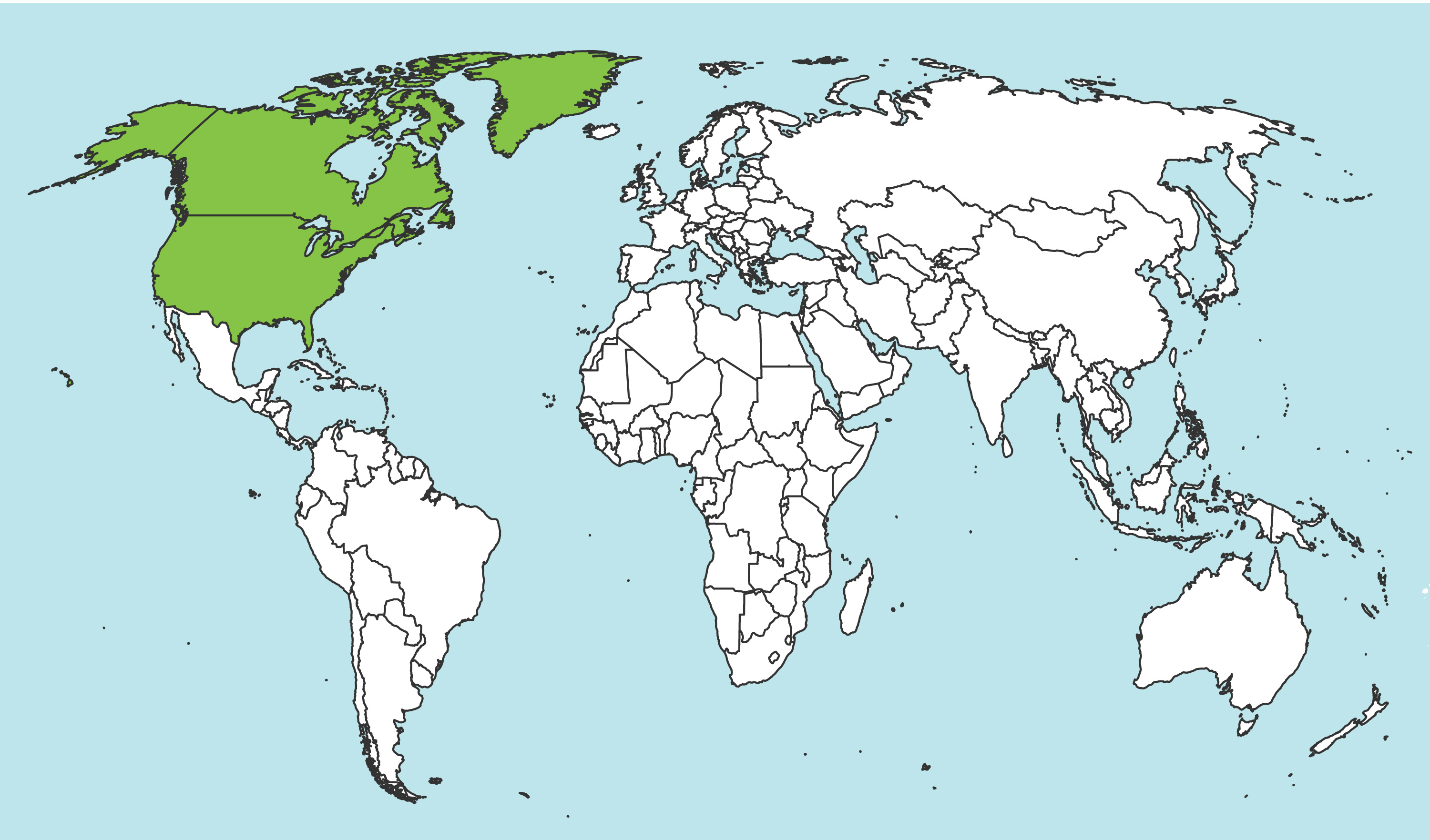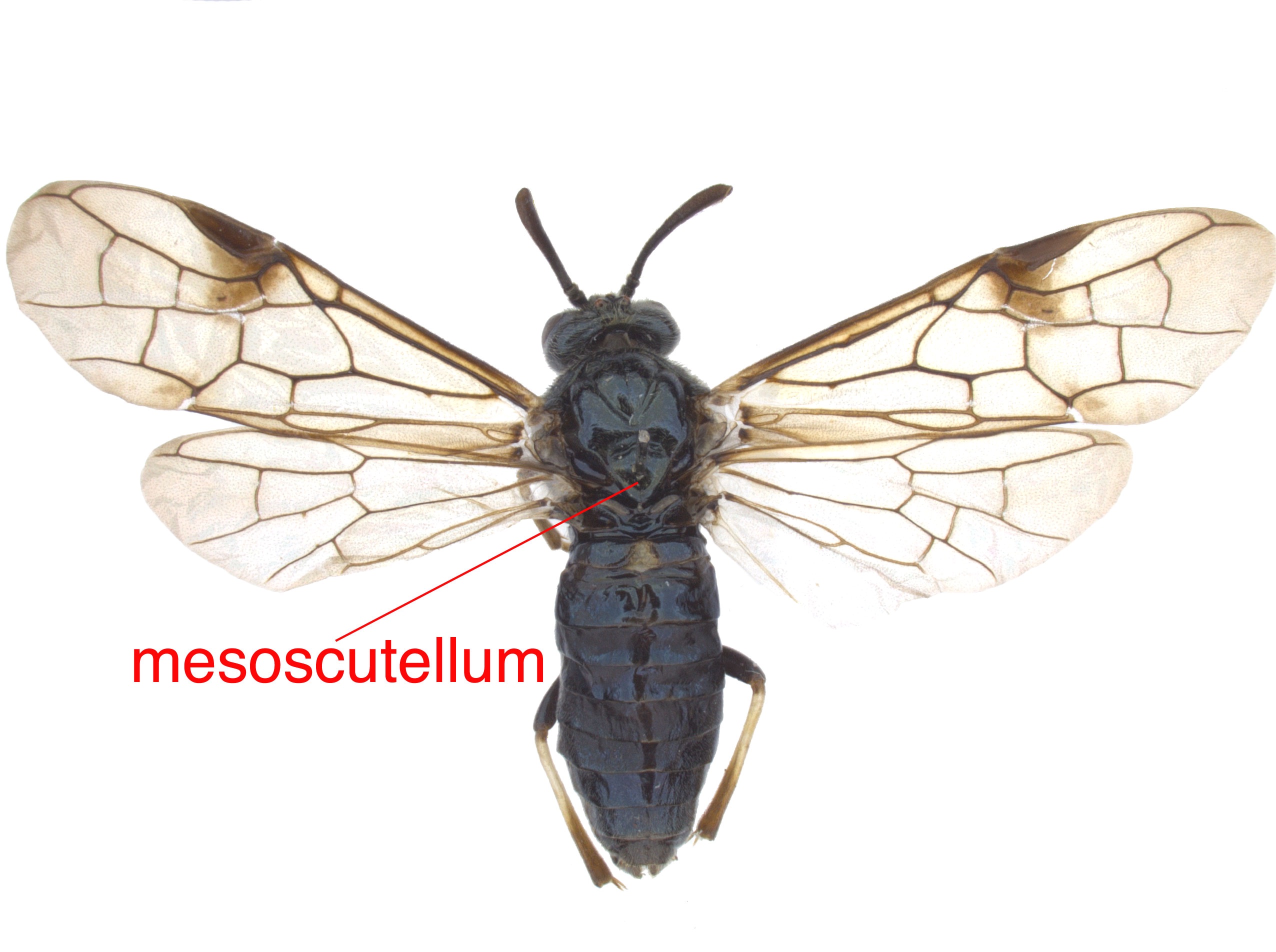Family: Tenthredinidae
Family common name: common sawflies
Subfamily: Allantinae
Tribe: Eriocampini
Genus: Pseudosiobla Ashmead, 1898
Subgenera: none
The Tenthredinidae are the most species-rich family and are found throughout the world, in all continents but Antarctica. They are known as the “common sawflies.” They can generally be recognized by a cylindrical body and long, segmented antennaeantenna:
the sensory organ emerging from the front of the head, usually between the compound eyes and above the clypeus; includes the flagellum, scape and pedicel
 . Otherwise, they come in a variety of colors, sizes, and forms (Goulet 1992Goulet 1992:
. Otherwise, they come in a variety of colors, sizes, and forms (Goulet 1992Goulet 1992:
Goulet H. 1992. The genera and subgenera of the sawflies of Canada and Alaska: Hymenoptera. Symphyta. The insects and arachnids of Canada. Part 20. Agriculture Canada Publication.).
Sawflies in the Allantinae subfamily are mostly black and shining, sometimes with other colors. They have agricultural importance as some species are pests on cultivated and ornamental plants (Smith 1979aSmith 1979a:
Smith DR. 1979a. Nearctic sawflies. IV. Allantinae: Adults and larvae (Hymenoptera: Tenthredinidae). Technical Bulletin, U.S. Department of Agriculture 1595: 1-172.). They can be distinguished from other subfamilies by wing venationvenation:
the network of veins on a wing
(Smith 2003aSmith 2003a:
Smith DR. 2003a. A Synopsis of the sawflies (Hymenoptera: Symphyta) of America south of the United States: Tenthredinidae (Allantinae). Journal of Hymenoptera Research 12 (1): 148-192.).
Pseudosiobla are relatively large, about 8–10 mm in length. All North American species are mostly black with color on the basalbasal:
towards the base; closest to the body
abdominal tergites and pronotumpronotum:
the anterodorsal part of the thorax, often situated posterior to the head
 , and have stout antennaeantenna:
, and have stout antennaeantenna:
the sensory organ emerging from the front of the head, usually between the compound eyes and above the clypeus; includes the flagellum, scape and pedicel
 (Smith 1979aSmith 1979a:
(Smith 1979aSmith 1979a:
Smith DR. 1979a. Nearctic sawflies. IV. Allantinae: Adults and larvae (Hymenoptera: Tenthredinidae). Technical Bulletin, U.S. Department of Agriculture 1595: 1-172.).
There are two described extantextant:
in existence; opposite of extinct
species worldwide; both are NearcticNearctic:
describing the region of the Northern Hemisphere that includes North America south through northern Mexico
 (Taeger et al. 2010Taeger et al. 2010:
(Taeger et al. 2010Taeger et al. 2010:
Taeger A, Blank SM, and Liston AD. 2010. World Catalog of Symphyta (Hymenoptera). Zootaxa 2580: 1-1064.).
A NearcticNearctic:
describing the region of the Northern Hemisphere that includes North America south through northern Mexico
 key to species is included in Smith 1979aSmith 1979a:
key to species is included in Smith 1979aSmith 1979a:
Smith DR. 1979a. Nearctic sawflies. IV. Allantinae: Adults and larvae (Hymenoptera: Tenthredinidae). Technical Bulletin, U.S. Department of Agriculture 1595: 1-172..
Subfamily characters
 vein M and 1m-cu parallel (Smith 1979aSmith 1979a:
vein M and 1m-cu parallel (Smith 1979aSmith 1979a: vein 2A+3A complete, connected to 1A by crossveincrossvein:
vein 2A+3A complete, connected to 1A by crossveincrossvein:Genus characters
 margin more or less straight or very shallowly emarginated (Smith 1979aSmith 1979a:
margin more or less straight or very shallowly emarginated (Smith 1979aSmith 1979a: , and mesoscutellummesoscutellum:
, and mesoscutellummesoscutellum: (Smith 1979aSmith 1979a:
(Smith 1979aSmith 1979a: vein 2r present (Smith 1979aSmith 1979a:
vein 2r present (Smith 1979aSmith 1979a: vein Rs absent (Smith 1979aSmith 1979a:
vein Rs absent (Smith 1979aSmith 1979a: vein M intersecting Sc+R closely basalbasal:
vein M intersecting Sc+R closely basalbasal: cellcell:
cellcell: M present (Smith 1979aSmith 1979a:
M present (Smith 1979aSmith 1979a: with indistinct basalbasal:
with indistinct basalbasal:Pseudosiobla can be confused with similar species in the subfamily Allantinae or tribe Eriocampini. It can be distinguished by the straight margin of the clypeusclypeus:
sclerotized area on the front of the head located between the antennal insertions and labrum
 , the absence of veinvein:
, the absence of veinvein:
a tube-like, often darkened, structure on the wings
 Rs, and the absence of a complete genal ridge (Smith 1979aSmith 1979a:
Rs, and the absence of a complete genal ridge (Smith 1979aSmith 1979a:
Smith DR. 1979a. Nearctic sawflies. IV. Allantinae: Adults and larvae (Hymenoptera: Tenthredinidae). Technical Bulletin, U.S. Department of Agriculture 1595: 1-172.).
none
In North America, Pseudosiobla feeds on Cephalanthus spp., including C. occidentalis (buttonbush) (Smith 1979aSmith 1979a:
Smith DR. 1979a. Nearctic sawflies. IV. Allantinae: Adults and larvae (Hymenoptera: Tenthredinidae). Technical Bulletin, U.S. Department of Agriculture 1595: 1-172.).
The female Pseudosiobla lays eggs into the dorsum of the leaf of the host plant. LarvaeLarva:
the immature stage of holometabolous insects
 are light green-gray with pairs of brown spots on each segment. The larvaelarva:
are light green-gray with pairs of brown spots on each segment. The larvaelarva:
the immature stage of holometabolous insects
 feed singly on the underside or edges of the leaves. At maturity they drop to the ground and build cocoons with dirt and sand, where they overwinter. Adults emerge in late spring/early summer. Pseudosiobla excavata is univoltineunivoltine:
feed singly on the underside or edges of the leaves. At maturity they drop to the ground and build cocoons with dirt and sand, where they overwinter. Adults emerge in late spring/early summer. Pseudosiobla excavata is univoltineunivoltine:
describing an insect with a life cycle of one generation per year
(Smith 1979aSmith 1979a:
Smith DR. 1979a. Nearctic sawflies. IV. Allantinae: Adults and larvae (Hymenoptera: Tenthredinidae). Technical Bulletin, U.S. Department of Agriculture 1595: 1-172.).
World: This genus is known only from North America (Taeger et al. 2010Taeger et al. 2010:
Taeger A, Blank SM, and Liston AD. 2010. World Catalog of Symphyta (Hymenoptera). Zootaxa 2580: 1-1064.).
North America: Pseudosiobla species occur in the eastern United States, from as far west as Texas, to Florida and New England on the Atlantic coast (Smith 1979aSmith 1979a:
Smith DR. 1979a. Nearctic sawflies. IV. Allantinae: Adults and larvae (Hymenoptera: Tenthredinidae). Technical Bulletin, U.S. Department of Agriculture 1595: 1-172.).
Map data from: GBIF.org (29 October 2019) GBIF Occurrence Download Pseudosiobla
Details about data used for maps can be found here.